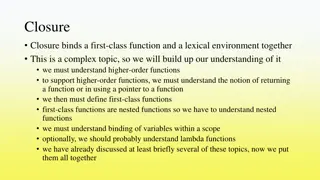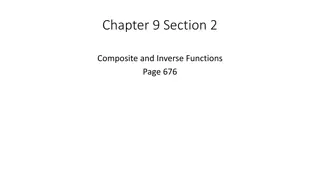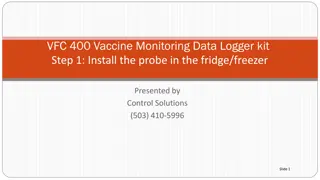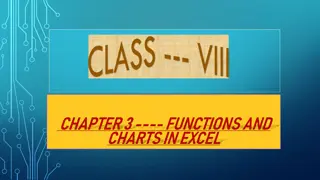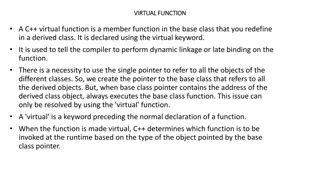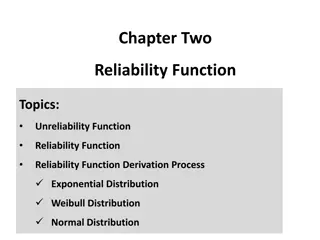
Understanding Freezer Parts: A Guide to Components and Their Functions
Learn about freezer components and their roles. Our guide helps you understand how each part keeps your freezer running smoothly.n
Download Presentation

Please find below an Image/Link to download the presentation.
The content on the website is provided AS IS for your information and personal use only. It may not be sold, licensed, or shared on other websites without obtaining consent from the author. Download presentation by click this link. If you encounter any issues during the download, it is possible that the publisher has removed the file from their server.
E N D
Presentation Transcript
Understanding Freezer Parts: A Guide to Components and Their Functions Have you ever opened your freezer to find your ice cream melted or your frozen vegetables thawed? It's frustrating, isn't it? To avoid such problems and keep your food safely frozen, it's important to understand how your freezer works. Think of a world where your favorite foods stay fresh for months, where you can stock up on sale items without worry, and where you always have ice ready for your drinks. This is the world that freezers create for us every day. But how does this kitchen marvel work its magic? Acquainting yourself with these basics can help you determine when you might need freezer repair services. A freezer is like a chilly superhero for your food, fighting against warmth to keep everything frozen. But it's not just one big cold box it's a complex machine with many parts working together. Each component plays a crucial role in creating and maintaining that icy environment we depend on.
Main Components of a Freezer Compressor: The Heart of the Freezer Think of the compressor as the freezer's heart. It pumps a special gas called refrigerant through the freezer's "veins" (pipes). This gas is the secret to making things cold. What it does: Squeezes (compresses) the refrigerant gas Moves the compressed gas through the freezer Makes a humming sound when working Condenser: The Heat Release System After the compressor, the refrigerant goes to the condenser. This part is usually at the back of the freezer and feels warm when the freezer is running. What it does: Turns the hot gas from the compressor into a liquid Releases heat outside the freezer Often looks like a grid of black pipes Read More Articles: What is the Number on the Proximity Card? Expansion Valve: The Cooling Controller This small but mighty part controls how much refrigerant enters the evaporator. It's like a traffic light for the cooling process. What it does: Lowers the pressure of the liquid refrigerant Controls the refrigerant flow Helps start the cooling process Evaporator: The Cold Maker The evaporator is where the real freezing happens. It's inside the freezer, often hidden behind a panel. What it does:
Turns the liquid refrigerant back into a gas Absorbs heat from inside the freezer Creates the cold air that keeps your food frozen Thermostat: The Temperature Guard The thermostat is like a watchdog for temperature. It makes sure your freezer stays at the right cold. What it does: Measures the temperature inside the freezer Turns the cooling system on and off as needed Helps maintain a steady temperature Fan: The Cold Air Mover Many freezers have a fan to move the cold air around. This helps keep the temperature even throughout the freezer. What it does: Circulates cold air Helps prevent frost build-up Ensures all areas of the freezer stay cold Common Freezer Parts and Their Functions Part Name Main Function Location Compressor Pumps refrigerant and compresses Outside, usually back Condenser Releases heat, turns gas to liquid Outside, usually back Expansion Valve Controls refrigerant flow Inside, near the evaporator Evaporator Creates cold air Inside Thermostat Controls temperature Inside Fan Circulates cold air Inside
Additional Important Parts Door Seal (Gasket): The Cold Keeper The door seal, or gasket, is the rubbery strip around the freezer door. It's crucial for keeping the cold air in and warm air out. What it does: Creates an airtight seal when the door is closed Prevents cold air from escaping Helps the freezer run efficiently Defrost Heater: The Frost Fighter Some freezers have a defrost heater to prevent too much ice from building up. What it does: Melt frost on the evaporator coils Turns on periodically to prevent ice buildup Helps maintain freezer efficiency Drain Pan: The Water Catcher When frost melts during the defrost cycle, the water needs to go somewhere. That's where the drain pan comes in. What it does: Collects water from defrosting Allows water to evaporate safely Prevents water from leaking onto your floor Control Board: The Freezer's Brain Modern freezers often have a control board that manages all the other parts. What it does: Coordinates the functions of other components Monitors temperature and adjusts as needed Controls features like defrost cycles and alarms
Freezer Types and Their Unique Components While the basic components are similar, different types of freezers may have some unique parts: Chest Freezers: The Spacious Storage Hinged lid instead of a vertical door Basket organizers for easy item sorting Some models have interior lights for better visibility Upright Freezers: The Kitchen's Cold Tower Vertical shelves and door bins for organized storage Auto-defrost systems in many models Digital temperature displays on newer versions Built-in Freezers: The Sleek Integrators Custom panels to match kitchen cabinetry Advanced airflow systems for even cooling Some have ice makers and water dispensers Maintenance Tips for Freezer Longevity Keeping your freezer in top shape can extend its life and efficiency: Regular Cleaning Wipe down interior surfaces monthly Clean the condenser coils twice a year Check and clean the drain pan as needed Temperature Monitoring Use a freezer thermometer to ensure optimal temperature Adjust the thermostat if the temperature fluctuates Proper Loading Techniques Avoid overloading to allow proper air circulation Group similar items together for easy access
Read More Articles: What is the Frequency of Proximity Cards Troubleshooting Common Freezer Issues Sometimes, your freezer might act up. Here are some common problems and potential solutions: Freezer Not Cold Enough Check thermostat settings Ensure the door seal is tight and undamaged Clear any obstructions from vents inside the freezer Unusual Noises Rattling could indicate a loose part Buzzing might mean the compressor is struggling Clicking sounds could be the start/stop of the compressor cycle Excessive Frost Build-up Check the door seal for proper closure Minimize door opening time Consider manually defrosting if auto-defrost isn't working These additions provide more context about different freezer types, maintenance tips, and troubleshooting advice, enhancing the overall usefulness of the article for readers. Wrapping Up the Chill: Key Takeaways Understanding your freezer's parts can help you keep it running smoothly and efficiently. Each component plays a crucial role in the freezing process, from the compressor that starts the cooling cycle to the door seal that keeps the cold air in. By knowing how these parts work together, you can better maintain your freezer and troubleshoot any issues that may arise. At CLT Appliance Repair, we understand the importance of a properly functioning freezer. Our expert technicians are trained to diagnose and repair all freezer components, ensuring your appliance runs at peak efficiency. From compressor replacements to gasket repairs, we've got you covered.
Don't let a faulty freezer spoil your food or energy bills and trust us for all your freezer repair and maintenance needs! Site Article: Understanding Freezer Parts: A Guide to Components and Their Functions




